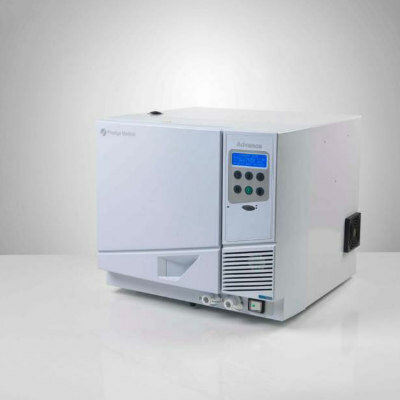AI X-ray Analysis Equal to Orthopedic Surgeon Diagnosis
|
By HospiMedica International staff writers Posted on 20 Jul 2017 |

Image: Examples of dataset images presents to networks for classification (Photo courtesy of Max Gordon/ Danderyd Hospital).
A new study suggests that artificial intelligence (AI) deep learning algorithms are on par with humans for diagnosing fractures from orthopedic radiographs.
Researchers at Karolinska Institutet (KI; Solna, Sweden), the Royal Institute of Technology (KTH; Stockholm, Sweden), and Danderyd Hospital (Sweden) extracted 256,000 wrist, hand, and ankle radiographs stored at Danderyd Hospital, classifying them by four variables - fracture, laterality, body part, and exam view. Five deep learning networks were then examined, with the most accurate network benchmarked against a gold standard for fractures.
The deep learning networks were then trained to identify fractures in two thirds of the radiographs under the guidance of the researchers, and then independently analyzed the remaining images, which were completely new to the AI program. Analysis was then compared with that of two senior orthopedic surgeons who reviewed the images at the same resolution as the network. The results showed that all networks exhibited an accuracy of at least 90% when identifying laterality, body part, and exam view.
The final accuracy for fractures was estimated at 83% for the best performing network, which was equivalent to that of senior orthopedic surgeons when they were presented with images at the same resolution as the network. According to the researchers, AI has the potential to do even better with access to greater amounts of data, and they have therefore begun a follow-up study that will include Danderyd Hospital's entire orthopedic archive of over a million high-resolution radiographs. The study was published on July 6, 2017, in Acta Orthopaedica.
“Our study shows that AI networks can make assessments on a par with human specialists, and we hope that we'll be able to achieve even better results with high-res X-ray images,” said senior author Max Gordon, MD, assistant consultant in orthopedics at Danderyd Hospital. “If we can go back to our digital archives, we'll also be able to do extensive research on survival, the development of disease and work capacity - studies that have been impossible to do owing to the amount of data to process.”
Deep learning is part of a broader family of machine learning methods that is based on learning data representations, as opposed to task specific algorithms. It involves artificial neural network (ANN) algorithms that use a cascade of many layers of nonlinear processing units for feature extraction and transformation, with each successive layer using the output from the previous layer as input to form a hierarchical representation.
Related Links:
Karolinska Institutet
Royal Institute of Technology
Danderyd Hospital
Researchers at Karolinska Institutet (KI; Solna, Sweden), the Royal Institute of Technology (KTH; Stockholm, Sweden), and Danderyd Hospital (Sweden) extracted 256,000 wrist, hand, and ankle radiographs stored at Danderyd Hospital, classifying them by four variables - fracture, laterality, body part, and exam view. Five deep learning networks were then examined, with the most accurate network benchmarked against a gold standard for fractures.
The deep learning networks were then trained to identify fractures in two thirds of the radiographs under the guidance of the researchers, and then independently analyzed the remaining images, which were completely new to the AI program. Analysis was then compared with that of two senior orthopedic surgeons who reviewed the images at the same resolution as the network. The results showed that all networks exhibited an accuracy of at least 90% when identifying laterality, body part, and exam view.
The final accuracy for fractures was estimated at 83% for the best performing network, which was equivalent to that of senior orthopedic surgeons when they were presented with images at the same resolution as the network. According to the researchers, AI has the potential to do even better with access to greater amounts of data, and they have therefore begun a follow-up study that will include Danderyd Hospital's entire orthopedic archive of over a million high-resolution radiographs. The study was published on July 6, 2017, in Acta Orthopaedica.
“Our study shows that AI networks can make assessments on a par with human specialists, and we hope that we'll be able to achieve even better results with high-res X-ray images,” said senior author Max Gordon, MD, assistant consultant in orthopedics at Danderyd Hospital. “If we can go back to our digital archives, we'll also be able to do extensive research on survival, the development of disease and work capacity - studies that have been impossible to do owing to the amount of data to process.”
Deep learning is part of a broader family of machine learning methods that is based on learning data representations, as opposed to task specific algorithms. It involves artificial neural network (ANN) algorithms that use a cascade of many layers of nonlinear processing units for feature extraction and transformation, with each successive layer using the output from the previous layer as input to form a hierarchical representation.
Related Links:
Karolinska Institutet
Royal Institute of Technology
Danderyd Hospital
Latest Health IT News
- Machine Learning Model Improves Mortality Risk Prediction for Cardiac Surgery Patients
- Strategic Collaboration to Develop and Integrate Generative AI into Healthcare
- AI-Enabled Operating Rooms Solution Helps Hospitals Maximize Utilization and Unlock Capacity
- AI Predicts Pancreatic Cancer Three Years before Diagnosis from Patients’ Medical Records
- First Fully Autonomous Generative AI Personalized Medical Authorizations System Reduces Care Delay
- Electronic Health Records May Be Key to Improving Patient Care, Study Finds
- AI Trained for Specific Vocal Biomarkers Could Accurately Predict Coronary Artery Disease
- First-Ever AI Test for Early Diagnosis of Alzheimer’s to Be Expanded to Diagnosis of Parkinson’s Disease
- New Self-Learning AI-Based Algorithm Reads Electrocardiograms to Spot Unseen Signs of Heart Failure
- Autonomous Robot Performs COVID-19 Nasal Swab Tests

- Statistical Tool Predicts COVID-19 Peaks Worldwide
- Wireless-Controlled Soft Neural Implant Stimulates Brain Cells
- Tiny Polymer Stent Could Treat Pediatric Urethral Strictures
- Human Torso Simulator Helps Design Brace Innovations
- 3D Bioprinting Rebuilds the Human Heart
- Nanodrone Detects Toxic Gases in Hazardous Environments
Channels
Artificial Intelligence
view channel
AI-Powered Algorithm to Revolutionize Detection of Atrial Fibrillation
Atrial fibrillation (AFib), a condition characterized by an irregular and often rapid heart rate, is linked to increased risks of stroke and heart failure. This is because the irregular heartbeat in AFib... Read more
AI Diagnostic Tool Accurately Detects Valvular Disorders Often Missed by Doctors
Doctors generally use stethoscopes to listen for the characteristic lub-dub sounds made by heart valves opening and closing. They also listen for less prominent sounds that indicate problems with these valves.... Read moreCritical Care
view channel
Deep-Learning Model Predicts Arrhythmia 30 Minutes before Onset
Atrial fibrillation, the most common type of cardiac arrhythmia worldwide, affected approximately 59 million people in 2019. Characterized by an irregular and often rapid heart rate, atrial fibrillation... Read more
Breakthrough Technology Combines Detection and Treatment of Nerve-Related Disorders in Single Procedure
The peripheral nervous system (PNS) serves as the communication network that links the brain and spinal cord to every other part of the body. It consists of two parts: the somatic nervous system, which... Read moreSurgical Techniques
view channel
Hydrogel-Based Miniaturized Electric Generators to Power Biomedical Devices
The development of engineered devices that can harvest and convert the mechanical motion of the human body into electricity is essential for powering bioelectronic devices. This mechanoelectrical energy... Read moreWearable Technology Monitors and Analyzes Surgeons' Posture during Long Surgical Procedures
The physical strain associated with the static postures maintained by neurosurgeons during long operations can lead to fatigue and musculoskeletal problems. An objective assessment of surgical ergonomics... Read more.jpg)
Custom 3D-Printed Orthopedic Implants Transform Joint Replacement Surgery
The evolving field of 3D printing is revolutionizing orthopedics, especially for individuals requiring joint replacement surgeries where traditional implants fail to provide a solution. Although most people... Read more
Cutting-Edge Imaging Platform Detects Residual Breast Cancer Missed During Lumpectomy Surgery
Breast cancer is becoming increasingly common, with statistics indicating that 1 in 8 women will develop the disease in their lifetime. Lumpectomy remains the predominant surgical intervention for treating... Read morePatient Care
view channel
Surgical Capacity Optimization Solution Helps Hospitals Boost OR Utilization
An innovative solution has the capability to transform surgical capacity utilization by targeting the root cause of surgical block time inefficiencies. Fujitsu Limited’s (Tokyo, Japan) Surgical Capacity... Read more
Game-Changing Innovation in Surgical Instrument Sterilization Significantly Improves OR Throughput
A groundbreaking innovation enables hospitals to significantly improve instrument processing time and throughput in operating rooms (ORs) and sterile processing departments. Turbett Surgical, Inc.... Read more
Next Gen ICU Bed to Help Address Complex Critical Care Needs
As the critical care environment becomes increasingly demanding and complex due to evolving hospital needs, there is a pressing requirement for innovations that can facilitate patient recovery.... Read moreGroundbreaking AI-Powered UV-C Disinfection Technology Redefines Infection Control Landscape
Healthcare-associated infection (HCAI) is a widespread complication in healthcare management, posing a significant health risk due to its potential to increase patient morbidity and mortality, prolong... Read moreHealth IT
view channel
Machine Learning Model Improves Mortality Risk Prediction for Cardiac Surgery Patients
Machine learning algorithms have been deployed to create predictive models in various medical fields, with some demonstrating improved outcomes compared to their standard-of-care counterparts.... Read more
Strategic Collaboration to Develop and Integrate Generative AI into Healthcare
Top industry experts have underscored the immediate requirement for healthcare systems and hospitals to respond to severe cost and margin pressures. Close to half of U.S. hospitals ended 2022 in the red... Read more
AI-Enabled Operating Rooms Solution Helps Hospitals Maximize Utilization and Unlock Capacity
For healthcare organizations, optimizing operating room (OR) utilization during prime time hours is a complex challenge. Surgeons and clinics face difficulties in finding available slots for booking cases,... Read more
AI Predicts Pancreatic Cancer Three Years before Diagnosis from Patients’ Medical Records
Screening for common cancers like breast, cervix, and prostate cancer relies on relatively simple and highly effective techniques, such as mammograms, Pap smears, and blood tests. These methods have revolutionized... Read morePoint of Care
view channel
Critical Bleeding Management System to Help Hospitals Further Standardize Viscoelastic Testing
Surgical procedures are often accompanied by significant blood loss and the subsequent high likelihood of the need for allogeneic blood transfusions. These transfusions, while critical, are linked to various... Read more
Point of Care HIV Test Enables Early Infection Diagnosis for Infants
Early diagnosis and initiation of treatment are crucial for the survival of infants infected with HIV (human immunodeficiency virus). Without treatment, approximately 50% of infants who acquire HIV during... Read more
Whole Blood Rapid Test Aids Assessment of Concussion at Patient's Bedside
In the United States annually, approximately five million individuals seek emergency department care for traumatic brain injuries (TBIs), yet over half of those suspecting a concussion may never get it checked.... Read more
New Generation Glucose Hospital Meter System Ensures Accurate, Interference-Free and Safe Use
A new generation glucose hospital meter system now comes with several features that make hospital glucose testing easier and more secure while continuing to offer accuracy, freedom from interference, and... Read moreBusiness
view channel
Johnson & Johnson Acquires Cardiovascular Medical Device Company Shockwave Medical
Johnson & Johnson (New Brunswick, N.J., USA) and Shockwave Medical (Santa Clara, CA, USA) have entered into a definitive agreement under which Johnson & Johnson will acquire all of Shockwave’s... Read more
















